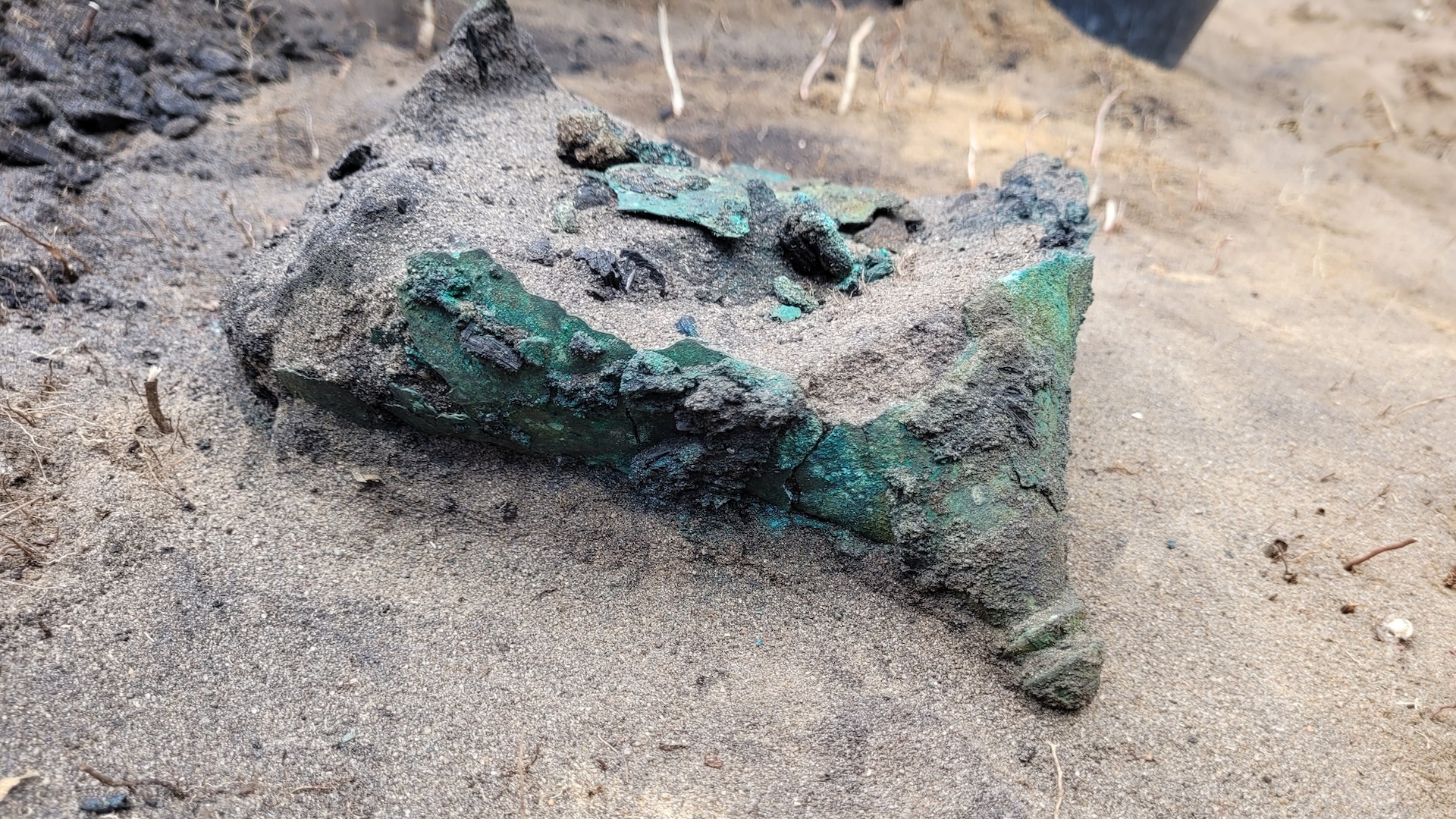
Archaeologists in Poland have discovered a rare find — a 2,300-year-old bronze helmet and other artifacts that establish for the first time that Celtic peoples lived in the country's north.
While the Celts (some were called Gauls by the Romans) are known to have colonized southern Poland around 400 B.C., this is the first evidence of them in the north — and it's likely they settled there to secure their supplies of precious amber, according to archaeologist Bartłomiej Kaczyński of the State Archaeological Museum in Warsaw, who led the excavations.
"The helmet, along with other Celtic finds, is evidence of the presence of the Celts," Kaczyński told Live Science, noting that it was the most northeastern site in Europe where they had been documented.
The helmet, made of thin bronze sheet-metal and originally lined with leather or fabric, is in the Celtic "Berru" style, with a conical top and a distinctive nape, that is known from several princely burials.
"It probably served not only a function of emphasizing the position of its owner, but a military one," Kaczyński said. "It was an item associated with the Celtic elites."
Related: Lost 'rainbow cup' coin minted by Celts 2,000 years ago discovered in Germany
A team from the Archaeological Museum and the University of Warsaw unearthed the helmet in August at the Łysa Góra archaeological site near the town of Chorzele, about 65 miles (105 kilometers) north of Warsaw.
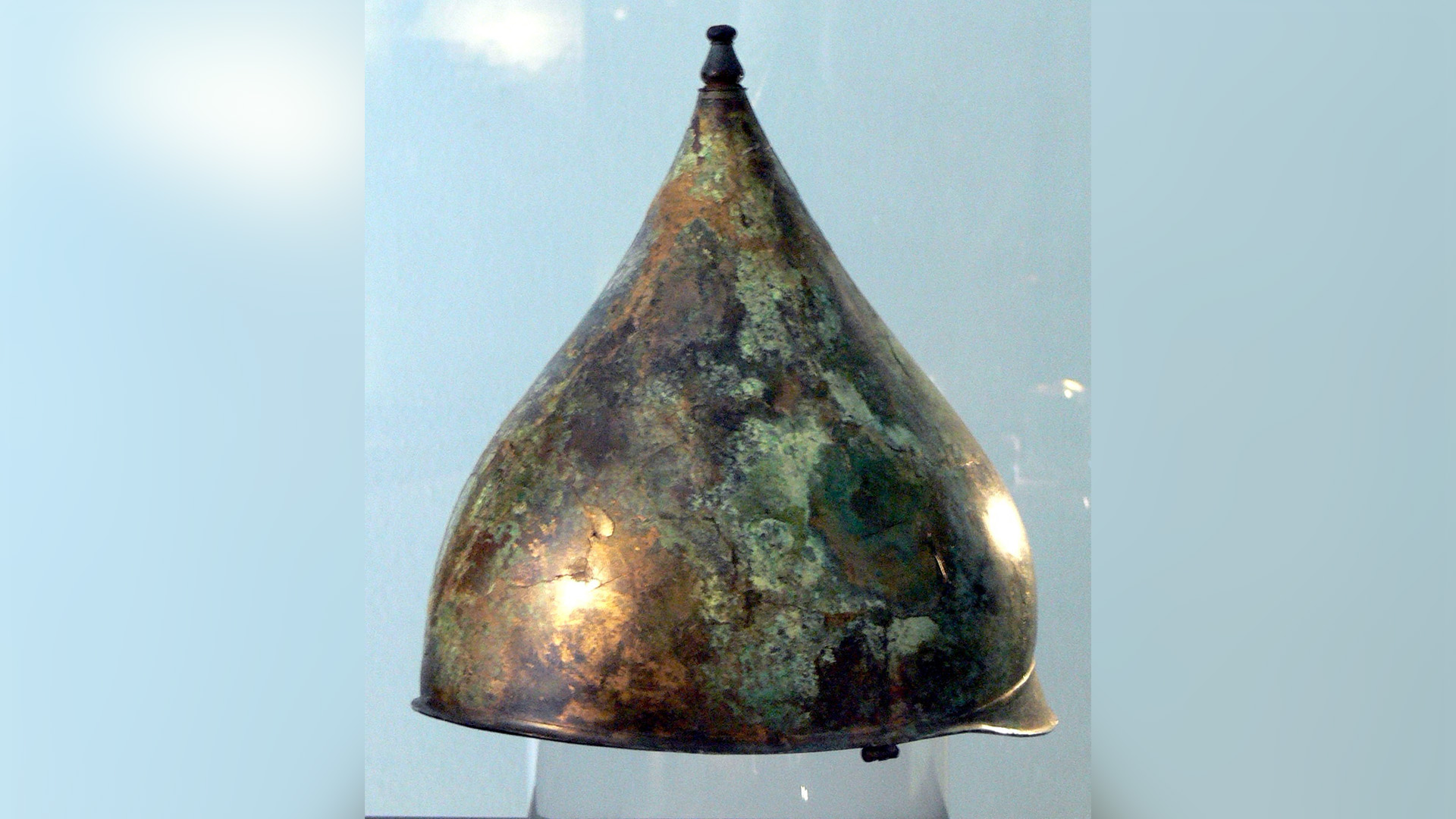
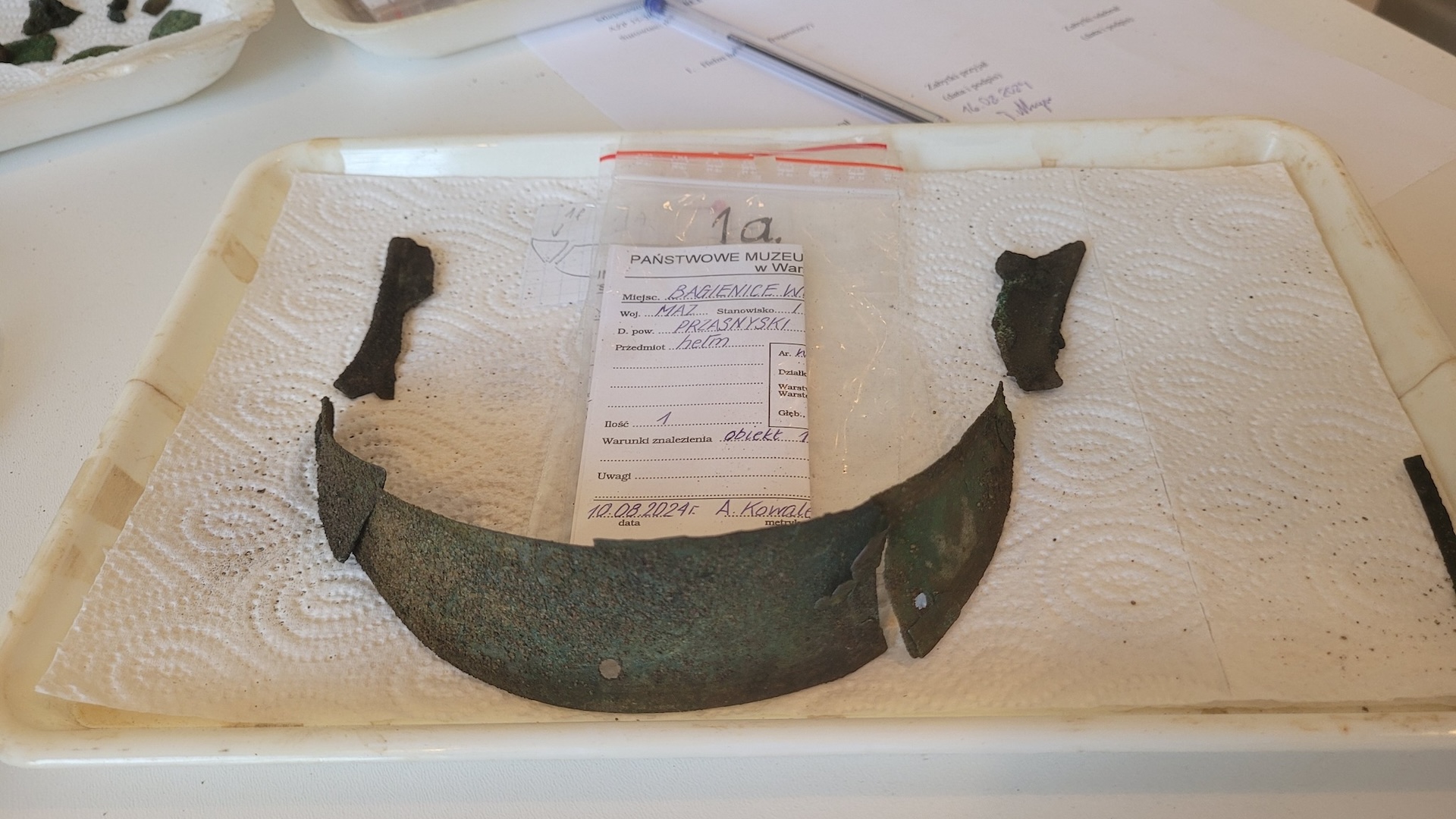
Ancient artifacts
Kaczyński explained that a hill at the Łysa Góra site was actually an ancient sand dune; prehistoric artifacts have been found there since the 19th century, and the location features in local legends about hidden treasures.
As well as the helmet, the archaeologists have found more than 300 ancient artifacts at the site in the last few months. They include four iron axes and an iron sword, which are unusual in this region, and which suggest the Celts helped introduce iron metallurgy there, he said.
The archaeologists also unearthed ornaments and brooches in Celtic styles, and several tools used in southern Europe but otherwise unknown in Poland at this time — including iron chisels, scythes and scissors.
Before this, few Celtic items had been found in northern Poland, and it was commonly thought that Celts from the south had only occasional contact with people in the north, Kaczyński said.
But the latest finds indicate that "these contacts were not episodic, but very intense and very important for the Celtic community," he said.
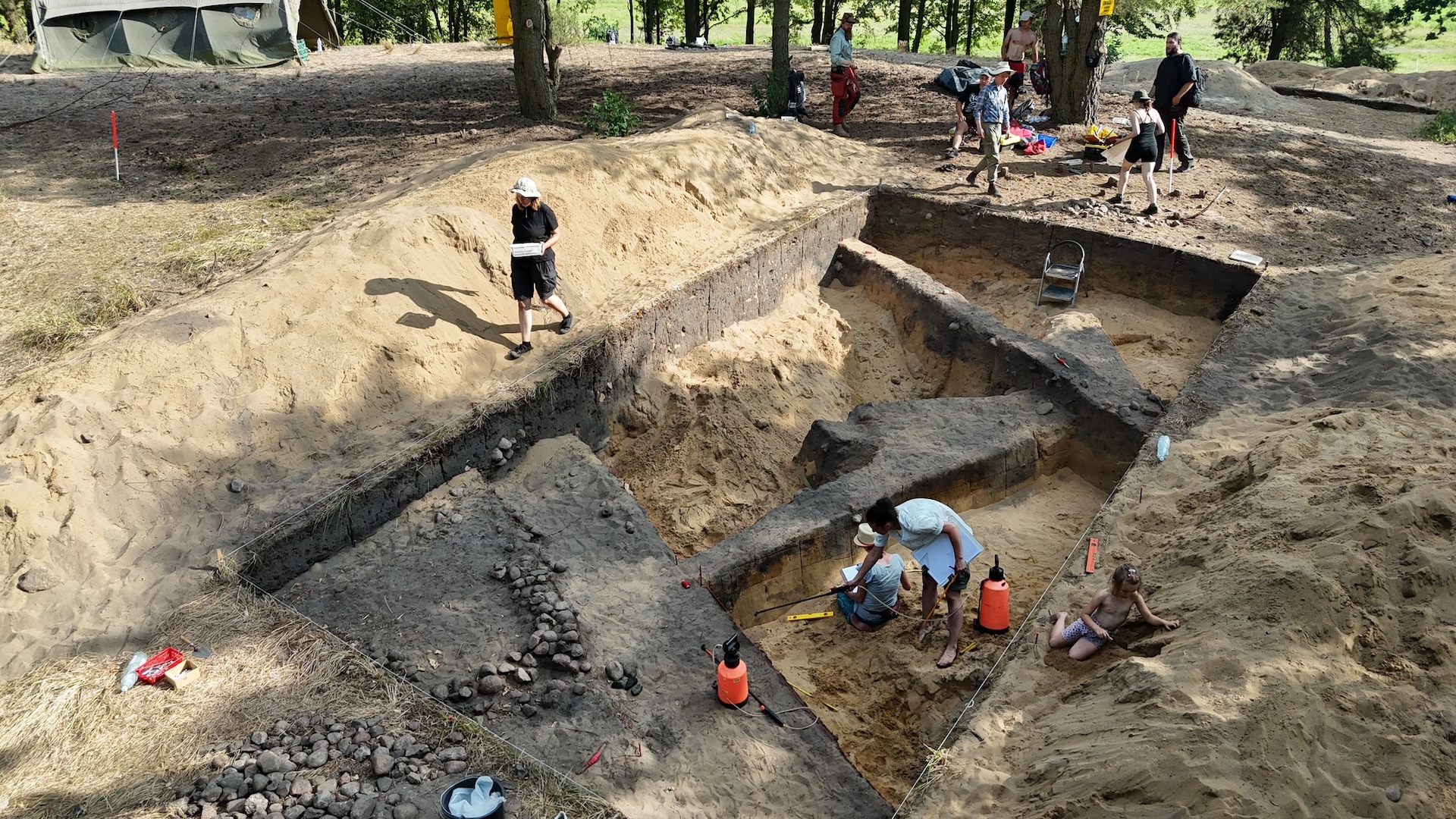
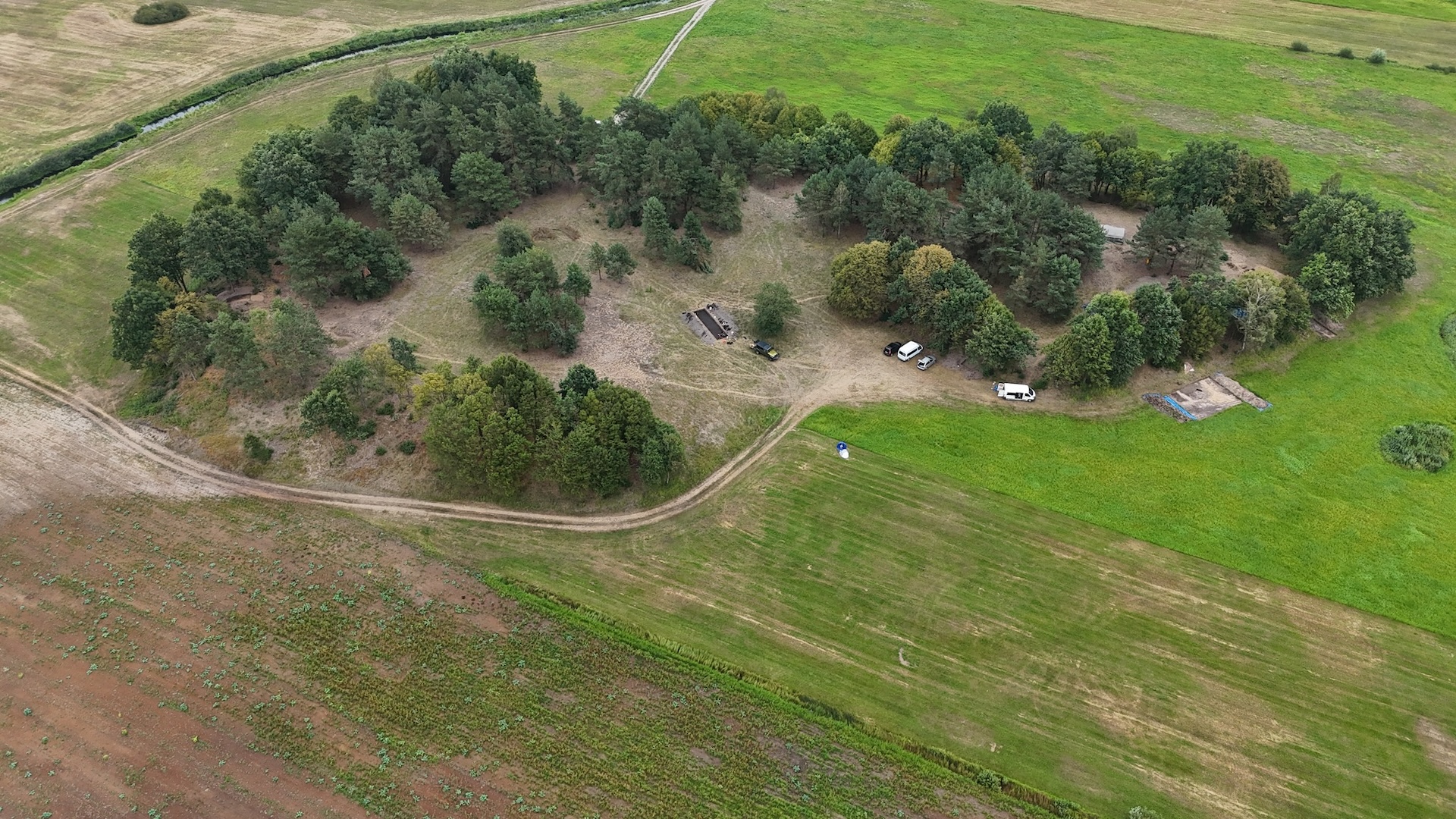
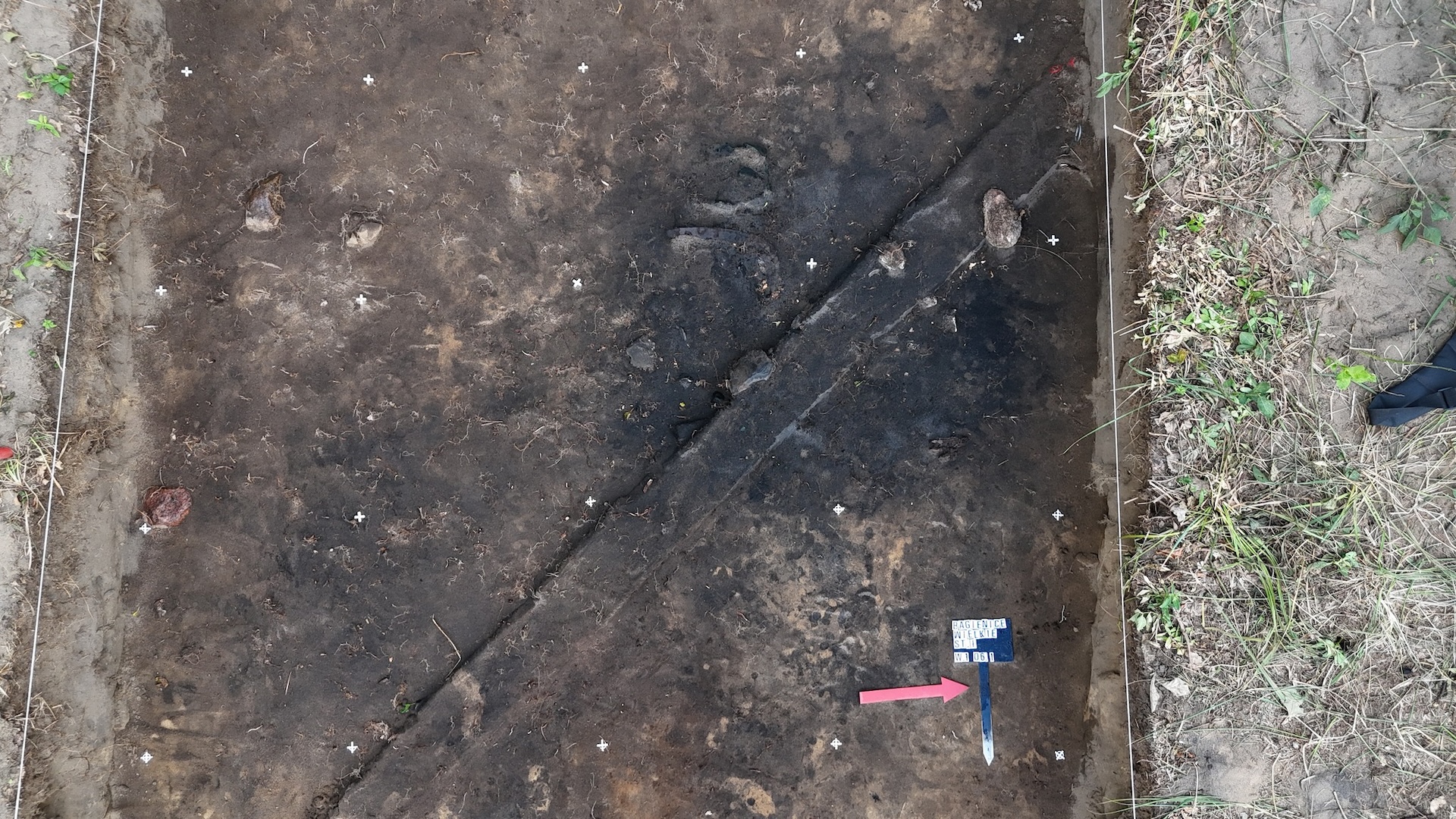
Precious amber
Kaczyński suggested that the Celts had settled at Łysa Góra to protect their supplies of amber — resin from ancient trees that had solidified into orange or golden translucent lumps.
Amber was found along the coast of the Baltic Sea in ancient times, and some of the best amber washed up from sediments in the Baltic onto the Curonian Spit, between what are now Lithuania and Russia's Kaliningrad oblast, or region.
Amber was highly prized in the Mediterranean world at this time, and amber ornaments and semi-finished amber products have also been discovered at the Łysa Góra site, Kaczyński said.
The discoveries suggest Łysa Góra was an important place on the "amber trail" to the south, and was probably a trading post between the flat and dry Masovia region and the hills, lakes, and wetlands of the Warmia and Masuria regions farther north, he said.
Editor's note: This article was corrected at 3:51 p.m. EDT to fix the name of the State Archaeological Museum in Warsaw.







